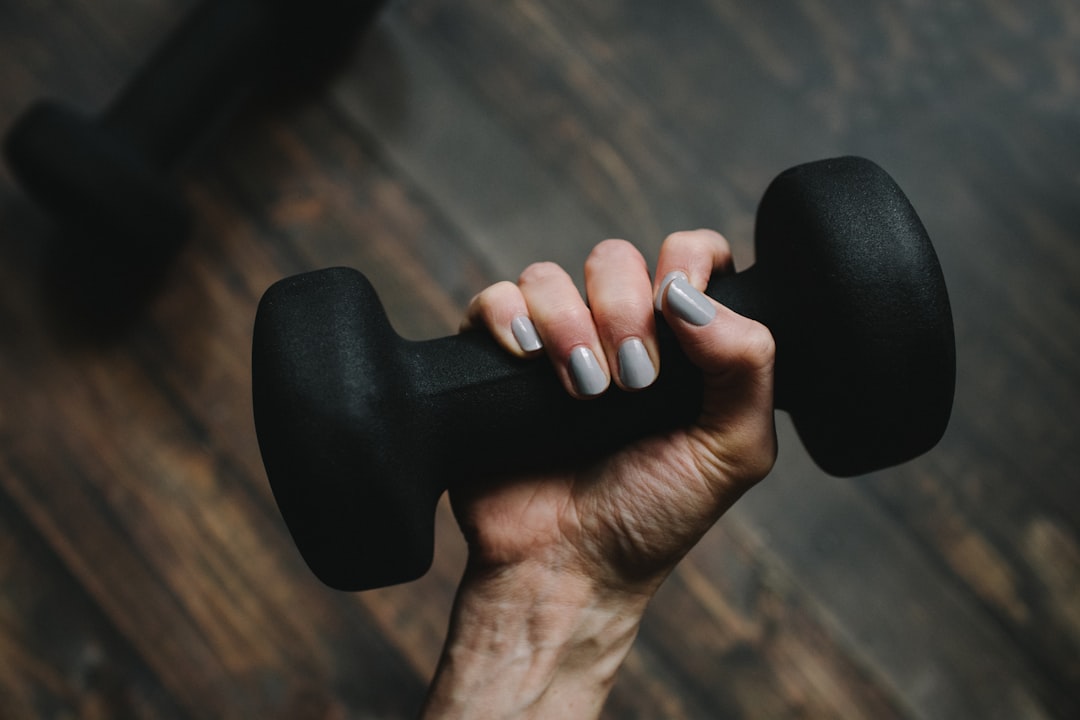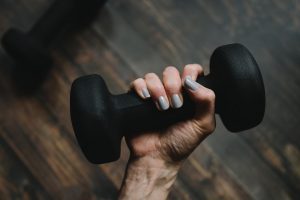Build Strength at Any Age: 6 Essential Exercises
Discover 6 expert-recommended exercises to build strength and vitality at any age. Boost your longevity and well-being—start today!
Introduction: The Importance of Strength Training
Enhancing Physical Health
Strength training is a crucial component of maintaining physical health, especially as we age. It helps in building muscle mass, which naturally declines with age, leading to improved metabolism and better weight management.
By engaging in regular strength exercises, individuals can enhance their bone density, reducing the risk of osteoporosis and fractures.
Moreover, strength training improves joint flexibility and balance, which are essential for preventing falls and injuries. These benefits make strength training an indispensable part of a fitness routine for those over 40, 50, and 60.
Boosting Mental Well-being
Beyond physical health, strength training plays a significant role in boosting mental well-being.
Exercise, including strength training, is known to release endorphins, which are chemicals in the brain that act as natural painkillers and mood elevators. This can help reduce symptoms of anxiety and depression, leading to improved mental health.
Additionally, achieving strength goals can enhance self-esteem and confidence, providing a sense of accomplishment and empowerment.
This mental resilience is particularly beneficial as individuals navigate the challenges associated with aging.
Promoting Longevity
Strength training is not just about building muscle; it’s about promoting longevity and a better quality of life. Studies have shown that regular strength training can lead to a longer life by reducing the risk of chronic diseases such as heart disease, diabetes, and certain cancers.
It also helps in maintaining independence in daily activities, which is a key factor in living a fulfilling life as we age.
By incorporating strength training into their routine, individuals can enjoy a more active and vibrant lifestyle, which contributes to overall longevity and well-being.
Key Exercises for Ages 40-60
1. Squats
Squats are a fundamental exercise that target the lower body, including the quadriceps, hamstrings, and glutes.
They help improve balance and mobility, which are crucial as we age. Performing squats regularly can enhance leg strength and support joint health.
To perform a squat, stand with feet shoulder-width apart, lower your hips back and down as if sitting in a chair, and then return to the starting position.
2. Push-Ups
Push-ups are a versatile exercise that strengthen the chest, shoulders, triceps, and core.
They can be modified to suit different fitness levels, from wall push-ups to traditional floor push-ups. This exercise helps maintain upper body strength and improves posture.
To perform a push-up, start in a plank position with hands slightly wider than shoulder-width apart, lower your body until your chest nearly touches the floor, and then push back up.
3. Plank
The plank is an excellent core exercise that also engages the shoulders and glutes.
It helps build endurance and stability in the core muscles, which are essential for maintaining good posture and preventing back pain. To perform a plank, lie face down, lift your body off the ground with your forearms and toes, keeping your body in a straight line from head to heels, and hold the position.
4.
Lunges
Lunges are effective for building strength and flexibility in the legs and hips. They also improve balance and coordination.
This exercise targets the quadriceps, hamstrings, and glutes. To perform a lunge, step forward with one leg, lower your hips until both knees are bent at about a 90-degree angle, then return to the starting position and switch legs.
5.
Bent-Over Rows
Bent-over rows are crucial for strengthening the back muscles, including the latissimus dorsi and rhomboids. They also engage the biceps and improve posture by counteracting the effects of sitting.
To perform this exercise, bend at the hips with a slight bend in the knees, hold a weight in each hand, and pull the weights towards your torso while keeping your elbows close to your body.
6. Deadlifts
Deadlifts are a full-body exercise that primarily target the lower back, glutes, and hamstrings.
They are excellent for building overall strength and improving functional movement patterns. To perform a deadlift, stand with feet hip-width apart, hold a weight in front of your thighs, hinge at the hips to lower the weight towards the ground, and then return to the starting position by engaging your core and glutes.
Benefits of Regular Strength Training
Improved Muscle Mass
As we age, maintaining muscle mass becomes crucial for overall health and mobility.
Regular strength training helps counteract the natural decline in muscle mass that occurs with aging. By engaging in targeted exercises, individuals over 40, 50, and 60 can preserve and even increase their muscle mass, which is essential for maintaining strength and independence.
Enhanced Bone Density
Strength training is not only beneficial for muscles but also for bones.
It stimulates bone growth and increases bone density, which is particularly important for older adults who are at a higher risk of osteoporosis. By incorporating weight-bearing exercises, individuals can significantly reduce their risk of fractures and improve their overall bone health.
Boosted Metabolism
Engaging in regular strength training can lead to a higher resting metabolic rate.
As muscle tissue burns more calories than fat tissue, increasing muscle mass through strength exercises can help boost metabolism. This is particularly beneficial for those over 40, 50, and 60, as metabolism naturally slows down with age, making it easier to maintain a healthy weight.
Improved Balance and Coordination
Strength training exercises often involve movements that enhance balance and coordination, which are crucial for preventing falls and maintaining mobility in older age.
By focusing on exercises that improve core strength and stability, individuals can enhance their proprioception and reduce the risk of falls, a common concern for those in their later years.
Better Mental Health
Regular strength training has been shown to have positive effects on mental health. It can reduce symptoms of anxiety and depression, improve mood, and boost self-esteem.
The release of endorphins during exercise acts as a natural mood enhancer, providing a sense of well-being and reducing stress levels.
Increased Longevity
Strength training is linked to increased longevity, as it contributes to overall health and vitality. By maintaining muscle mass, bone density, and metabolic health, individuals can enjoy a higher quality of life and potentially extend their lifespan.
Regular exercise, including strength training, is a key component of a healthy lifestyle that promotes longevity.
Tips for Incorporating Exercise Into Your Routine
Start with Simple Movements
When beginning an exercise routine, especially after 40, 50, or 60, it’s crucial to start with simple movements that do not require a gym. Focus on exercises that use your body weight, such as squats, lunges, and push-ups.
These exercises are effective for building strength and can be easily modified to match your fitness level.
Set Realistic Goals
Setting achievable goals is essential to maintain motivation. Begin with small, attainable objectives, such as exercising for 15 minutes a day, three times a week.
Gradually increase the duration and intensity as your strength and endurance improve. This approach helps in creating a sustainable routine that you can stick to over the long term.
Incorporate Variety
To prevent boredom and work different muscle groups, incorporate a variety of exercises into your routine.
Include a mix of strength training, flexibility exercises, and cardiovascular activities. This not only keeps your routine interesting but also ensures a well-rounded fitness regimen that supports overall health and longevity.
Listen to Your Body
Pay attention to how your body responds to different exercises.
It’s important to recognize the difference between discomfort from exertion and pain from potential injury. Adjust your routine accordingly to avoid overexertion and allow for adequate rest and recovery.
This is particularly important as the body’s recovery time may increase with age.
Stay Consistent
Consistency is key when it comes to building strength and improving fitness. Establish a regular schedule that fits into your lifestyle, and treat exercise as a non-negotiable part of your day.
Consistency helps in forming habits, making it easier to maintain an active lifestyle in the long run.
Seek Professional Guidance
If you’re unsure about where to start or how to perform certain exercises, consider consulting with a fitness professional. They can provide personalized advice and ensure that you’re using proper form, which is crucial for preventing injuries and maximizing the effectiveness of your workouts.
FAQ
Q1: What are the six exercises recommended by the longevity expert for those over 40, 50, and 60 to build strength?
A1: The longevity expert suggests focusing on functional exercises that enhance strength, flexibility, and balance. While the specific exercises may vary, they typically include movements like squats, lunges, push-ups, planks, rows, and deadlifts. These exercises target major muscle groups and are designed to improve overall fitness and prevent age-related decline. It’s essential to perform these exercises with proper form to maximize benefits and minimize the risk of injury.
Q2: How often should beginners perform these exercises, and what can they do to manage soreness?
A2: Beginners should aim to perform these exercises two to three times a week, allowing at least a day of rest between sessions to facilitate recovery. To manage soreness, it’s important to start with lighter weights or bodyweight variations and gradually increase intensity as strength improves. Incorporating a proper warm-up and cool-down routine, staying hydrated, and ensuring adequate nutrition can also help reduce muscle soreness. If soreness persists, consider consulting a fitness professional to adjust your routine or technique.
Q3: How can advanced users overcome plateaus and optimize recovery when performing these exercises?
A3: Advanced users can overcome plateaus by incorporating variations of the exercises, such as changing the grip, stance, or tempo, and by progressively increasing resistance or volume. Additionally, incorporating periodization—cycling through different phases of intensity and volume—can help stimulate further gains. For optimal recovery, advanced users should prioritize adequate sleep, maintain a balanced diet rich in protein and nutrients, and consider active recovery techniques such as stretching, yoga, or light cardio. Listening to the body’s signals and allowing for rest days is crucial to prevent overtraining and ensure continued progress.
Takeaway
🔥 Ready to crush your fitness goals and unleash your inner warrior? Join our vibrant fitness community today and kickstart your journey towards a stronger, healthier you! 💪🏋️♀️
🌟 Download your FREE training plan now and embark on an exhilarating workout challenge that will push your limits and transform your body! 🚀🔥
Don’t wait any longer to make a positive change in your life. Take the first step towards a fitter, happier you – the time is NOW! Let’s sweat, smile, and succeed together! 💥👟 #FitnessGoals #WorkoutChallenge #JoinUs
References
- British Journal of Sports Medicine (2021) links regular fitness training to a 40% lower risk of early death.
- CDC (2022) reports that only 23% of U.S. adults meet recommended aerobic and muscle-strengthening guidelines.










Comments